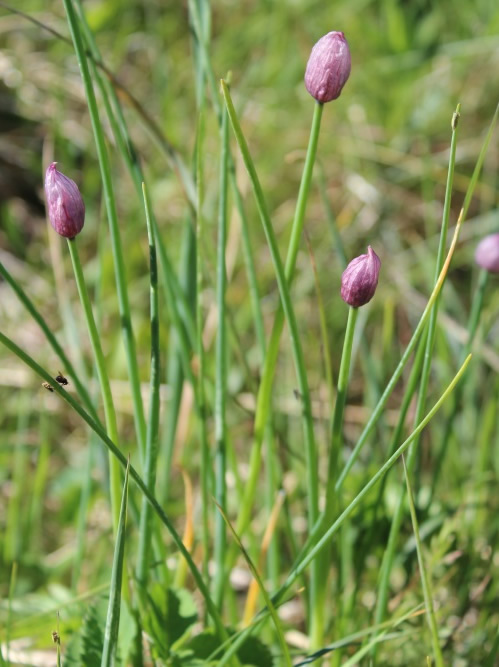Chives

Botanical Name: Allium Schoenoprasum
Common Name: Chives/Wild Onions
Other Names: luwit / luuguaq (something like onion) Luk; luugat??
Found in: Grows well in areas that do not excessively dry
Physical Characteristics: Wild chive has many rose to lavender colored flowers on a dense, nearly round, umbel just above a clump of long hollow grass-like leaves (Pratt 1991).
Nutritional Value: High in Vitamin C, phosphorus, iron, and chlorophyll.
Parts of the plant used: leaves, bulbs, flowers
When plant should be gathered: leaves are prime before flowering, if trimmed at the base, they may be gathered repeatedly during the green season, spring through mid-summer. Bulbs may be harvested in spring or fall. Pick flowers at their peak.
Plant applications: food seasoning
Reported Benefits: food seasoning
Preparation/Processing: food seasoning: After the plants are cleaned the leaves flowers and bulbs should be cut into quarter inch long pieces. The pieces are then crushed together to release the juices. Rock salt is added to the leaves to act as a preserver. This mixture is then jarred and can be used to season a number of dishes. It is especially delicious on salmon.
